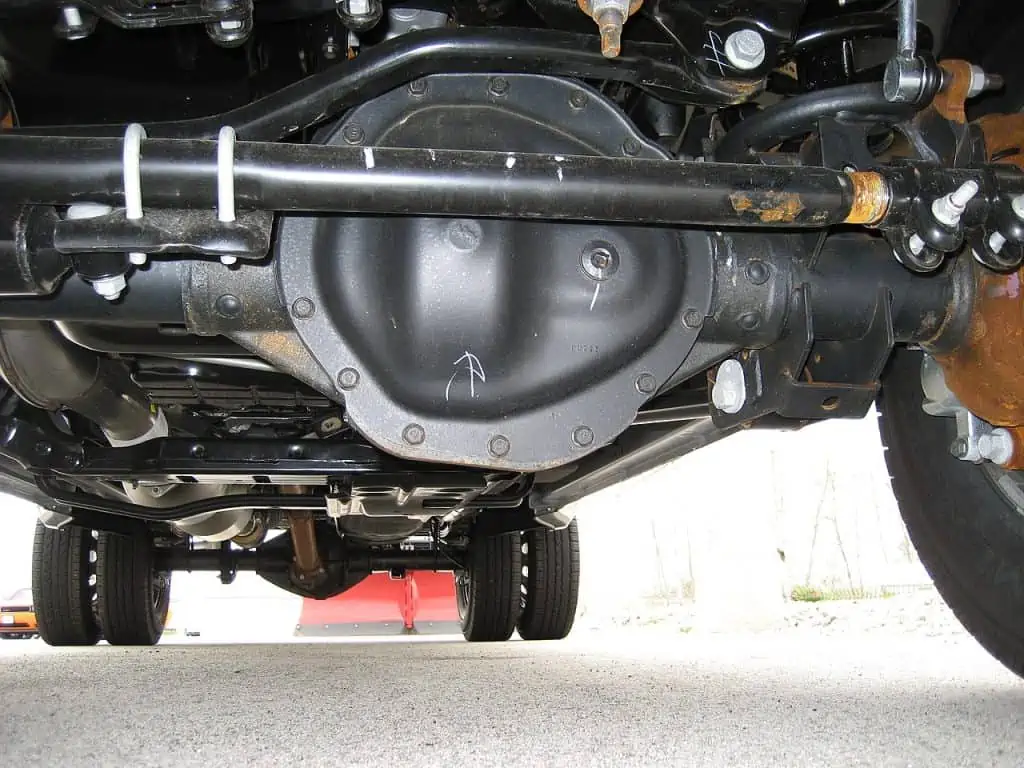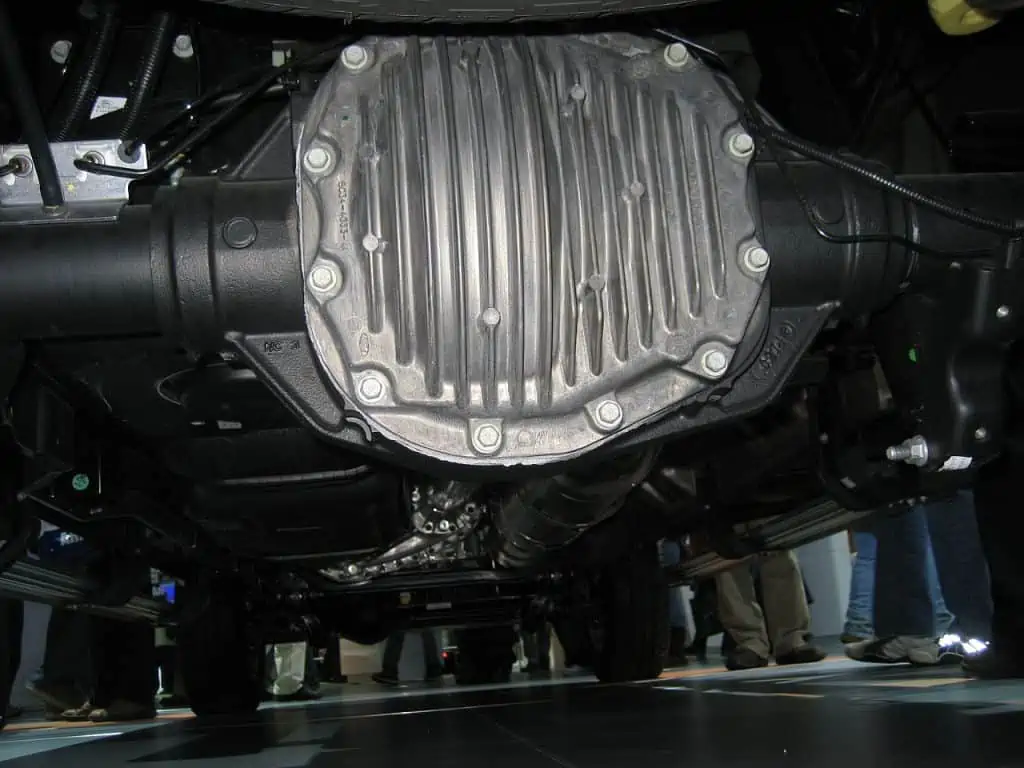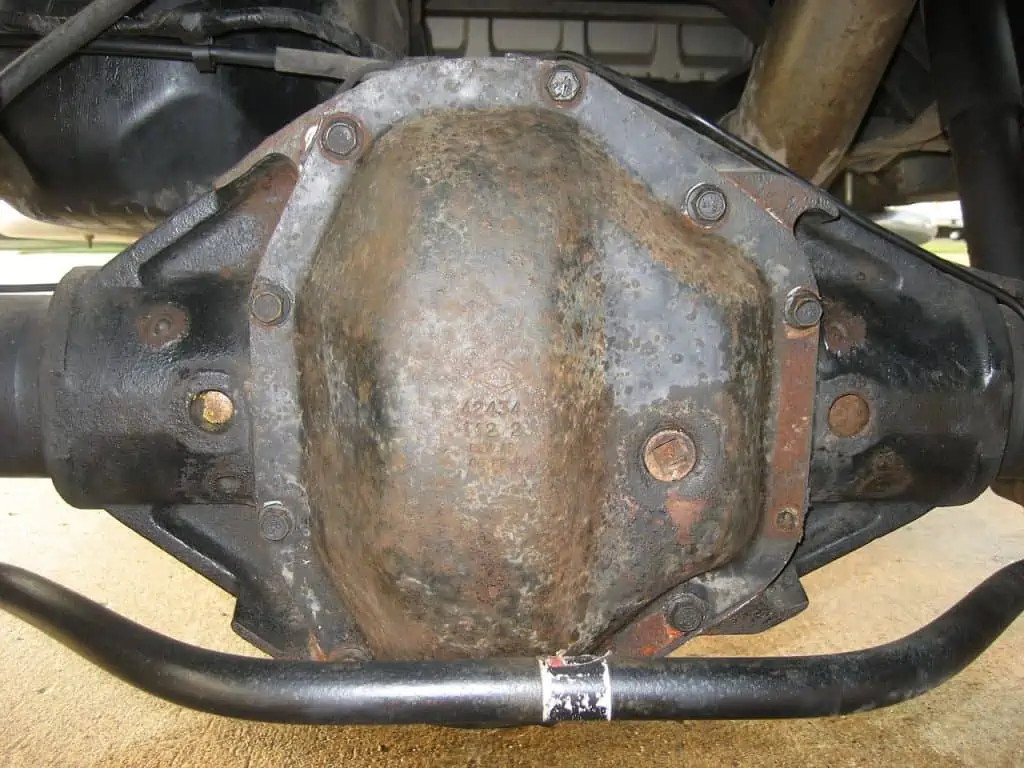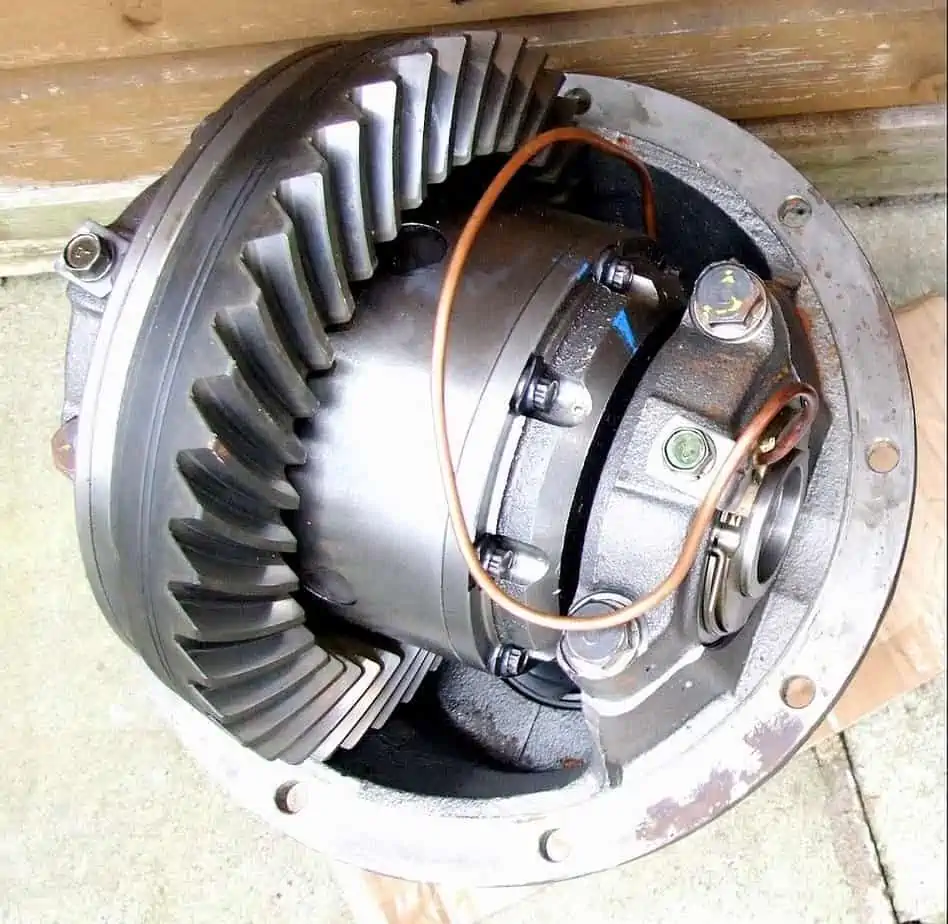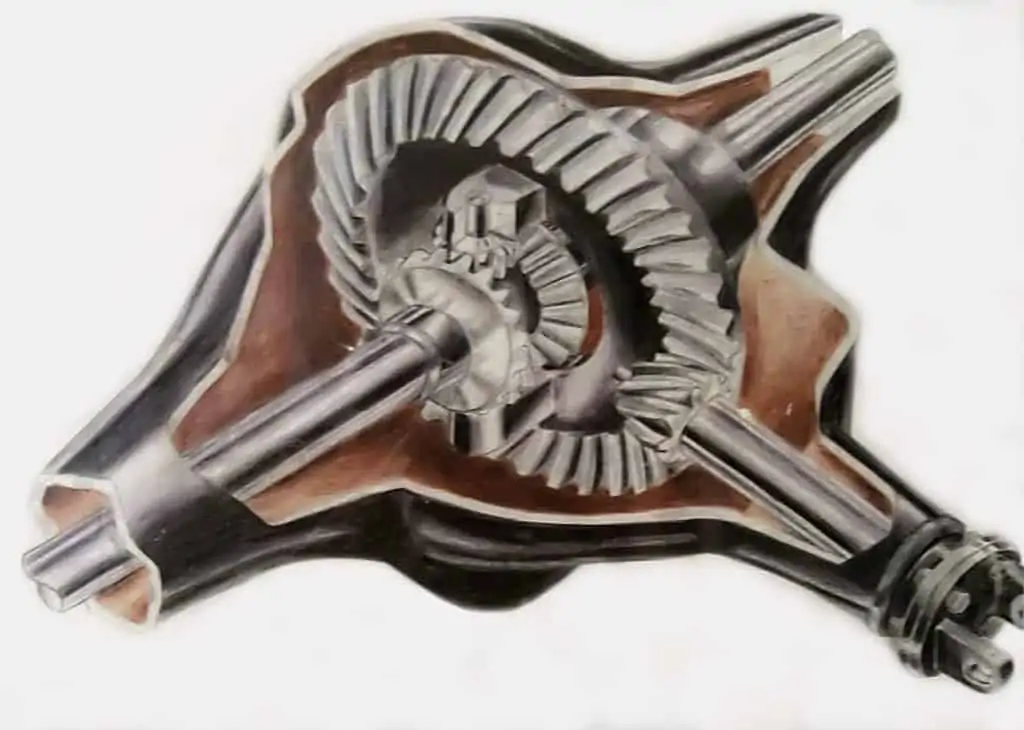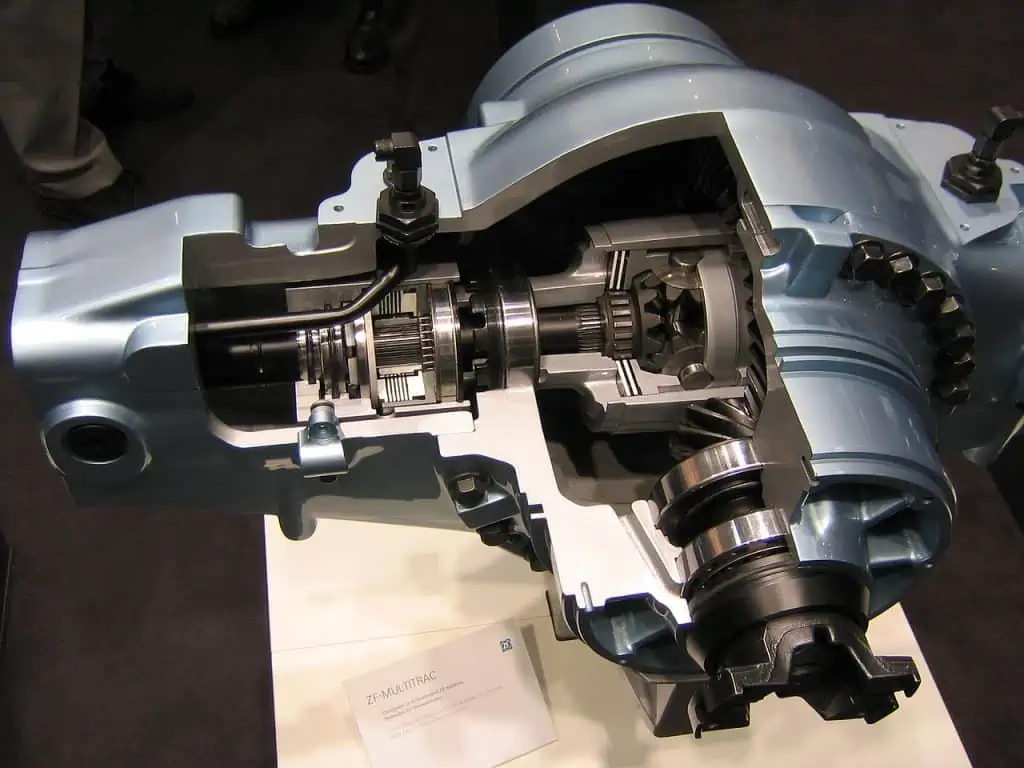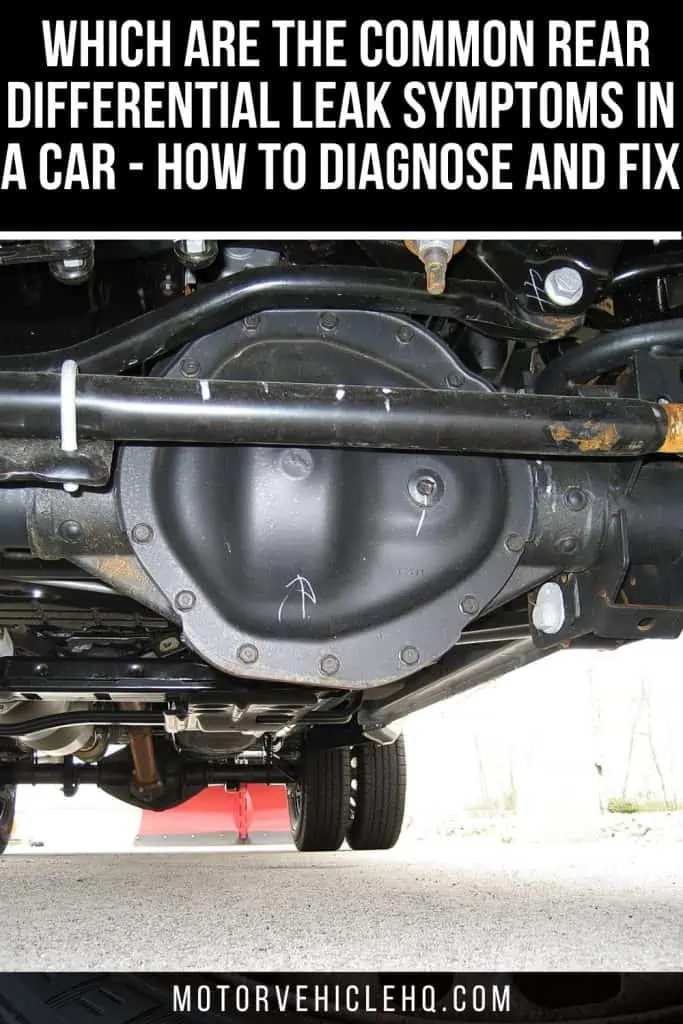You most likely have a rear differential leak if you’ve noticed leaks coming from the back of your car. In this situation, rear differential repairs are necessary to restore your car to its peak operating condition.
It is identical to other parts of our autos. After many kilometers of use, the rear differentials are beginning to exhibit their limitations. These devoted parts are working extremely hard to keep your car on the road.
They will eventually give up and start to appear worn out. This is why you need to maintain them frequently and replace any parts that degrade with time.
Your differential will live longer and be more durable if you replace these parts. Just locate a mechanic with experience working on these differentials. Additionally, you should be aware of the typical problems that arise with vehicles that have a rear differential.
Due to this, we will go over everything there is to know about differentials in this article. We’re going to start with the fundamentals. After that, we’ll describe the differential and its function.
Additionally, we’ll discuss frequent issues that arise and how to solve them. In the end, we’ll go over how to swap out your differential fluid. We’ll also tell you how much it will cost to replace your differential.
A Rear Differential: What Is It?
A component located on the back axle is the differential. Or, if you drive a front-wheel-drive vehicle, you might mount it along the front axle. Delivering power from the engine to the wheels is aided by the differential.
This indicates that the differential is not turning the wheels in unison. The car won’t be able to turn or handle bends if the differential turns both wheels at once.
The car’s rear differential by Dana60Cummins / CC BY-SA 3.0. The rear differentials start to show their limitations after being used for many kilometers. These loyal components are working incredibly hard to keep your car on the road.
To control how much power each wheel receives to turn, there are gears. In other terms, this means that when making a turn, the differential enables the outer wheel to revolve much more quickly than the inner wheel.
The differential’s internal gears are quite robust and capable of withstanding a great deal of pressure. However, every difference has a cap. Your difference will disintegrate if that limit is reached.
Because of this, you should adhere to the manufacturer’s recommendations and avoid overloading the vehicle.
If you apply too much torque to a differential, it may also collapse. For instance, engines are heavily modified for use in racing applications. The differential, however, cannot support these new high torque levels when they operate at the same differential as the stock engine did, and it breaks.
To avoid leaks and other rear differential repairs, the differential must also receive the required maintenance. We will discuss things in more detail later. Let’s first examine the many forms of differentials.
The Rear Differential: Where Is It Located In a Car?
The rear differential is normally found at the vehicle’s back, between the rear axle housing and the driveshaft. Differentials come in a variety of forms, but they generally function in the same ways.
A set of gears in the differential are attached to the driveshaft. When you turn the steering wheel, these gears revolve, allowing the drive wheels to spin at various speeds. Even when you’re making turns, this maneuver keeps your car moving smoothly.
The Rear Differential Fluid: What Is It and How Is It Important In a Car?
When making repairs to the rear differential. The replacement of the fluid should be one of your primary objectives. How about the fluid that the rear differential uses?
Different from conventional oil, differential fluid is a golden yellow color. This is specifically due to its viscosity. The differential’s gear oil is a substantial thickness. The thick fluid aids the differential in supplying the proper amount of torque to the wheels.
Additionally, this fluid is incredibly strong and resilient. A differential can operate for more than 100,000 miles without maintenance or fluid replacement. However, this varies from vehicle to vehicle. Every 30,000 to 60,000 miles, most mechanics advise getting a checkup.
However, the fluid will appear dreadful once the differential is opened up. From yellow to golden, the color shifts into one that doesn’t appear as well as it should. Many people detest differential fluid changes because of the nauseating scent of this fluid.
However, you should monitor the differential’s condition. This range of 30,000 to 60,000 miles is an excellent sweet spot for changing the differential fluid. In this manner, rear differential repairs are never a concern. Despite this, rear differential repairs can occur occasionally. In the following chapter, we will discuss the most frequent rear differential repairs.
What are the Common Rear Differential Leak Symptoms In a Car?
A deteriorating or problematic rear differential will manifest several signs to alert the driver of a problem, just like any other mechanical part would. Here are a few signs that a differential is malfunctioning.
The differential must also get the needed maintenance in order to prevent leaks and other rear differential repairs.
1. Whining Sounds
A front or rear differential that is deteriorating will create whirring, whining, screaming, and humming noises. During acceleration, deceleration, or cornering, these noises will gradually shift.
A damaged or worn-out bearing in the axle or carrier is typically to blame for a vehicle’s buzzing or whirring noise. And when it makes a whining or howling noise, the ring and pinion gears are typically to blame. A ring and pinion gear failure is typically brought on by wear, scoring, or misalignment.
Furthermore, you will hear a clunking sound when shifting from park to drive if there is too much backlash or clearance between the ring and pinion. Using a telescope, you can determine whether the noise is coming from the back axle or the differential.
Additionally, when the differential needs repair or maintenance, the axle itself also needs attention and inspection for any damage that could be caused by a faulty rear axle bearing. Simply put, excessive noise is a typical sign of a damaged rear axle shaft.
2. Fluid Leakage
It’s most likely differential fluid coming out of the back of your vehicle. Differential fluid smells like burnt gear oil and is a viscous, dark green, or crimson fluid. If you notice this leaking from your vehicle, it’s crucial to have it corrected right away because it could harm the differential.
3. A Burning Scent
While driving, if you notice a burning smell, the differential fluid may be overheated. This can harm your car’s differential because the gears aren’t properly greased.
It’s crucial to have the rear differential seal on your car replaced if you experience any of these symptoms.
4. Heat Buildup in the Rear Differential
The incorrect oil type, lack of lubrication, worn gears, high bearing preload, backlash between the ring and pinion, overloading when towing a heavy trailer, and equipment loading can all contribute to differential overheating. Low differential fluid is indicated by differential overheating.
5. Wheel Handling Challenges
Imagine you’re having trouble controlling your wheels, especially at corners. In that situation, you might need to stop and inspect your differential as well as any further attached parts, like the universal bearing and propeller. If your differential is worn out, handling your car could become difficult, which could lead to an accident.
6. Abnormal Vibration
Being concerned if you experience unexpected vibrations from your car. It can be a sign of a rear-end differential or another car problem coming from the back wheels. When your back wheels vibrate, immediately check your differential or call a mechanic for a detailed inspection.
7. Failure of the Rear Differential Owing to Inadequate Lubrication
Make sure there are no leaks near the rear differential gasket first. Next, inspect the region around the back axle for leaks. The pinion gear seals are susceptible to leaks, and when the leak is severe enough, dirt and oil will gather directly beneath the carrier, the pinion gear, or the locations where the brake system is located.
Why Does a Rear Differential Leak Occur?
A leak might form in the differential’s subsequent components. Watch out for these if you think your car’s differential fluid is seeping from underneath:
1. Faulty Differential Seal
The differential gasket’s primary job is to act as a seal between the differential case and the differential cover. This gasket may lead to differential leaks if it is worn out or damaged over time. Unfortunately, if this occurs, the only way to stop the leak is to completely replace the gasket.
The sounds of a failing front or rear differential include whirring, whining, screaming, and buzzing. These noises will gradually change while cornering, accelerating, or decelerating.
2. A Damaged Pinion Seal for the Rear Differential
The location where the driveshaft enters the differential is sealed by the pinion seal, which is situated at the differential’s back. This seal may deteriorate or wear out over time, leading to a leak in your differential. To stop further damage, you should replace this seal as soon as you suspect it is leaking.
3. A Malfunctioning Differential Cover
The purpose of the differential cover is to shield the interior parts of your differential from harm and water infiltration. Your differential may experience leaks or other issues if this cover is damaged or cracked.
A differential cover may sustain damage mostly as a result of the collision (such as when a pebble strikes it while driving) or corrosion. If the cover cannot be fixed, you might have to replace it entirely.
4. Ineffective Differential Side Seals
The side seals serve to seal the bearings in place and are found on each side of the differential. Over time, these seals may deteriorate or wear out, leading to a leak in your differential. To stop further harm, you should repair your side seals as soon as you suspect they are leaking.
5. Differential Tube Leaks
The differential fluid must be transported from the differential to the axle through differential tubes. It is crucial to transport differential fluid from the differential to the axle because damage may result if the differential fluid level falls too low near the axle’s moving parts.
Over time, differential tubes may develop leaks that result in a loss of differential fluid. Replace your differential tubes as soon as you can if you observe a leak coming from them or notice that your differential fluid level is low.
6. An Old Axle Seal
The end of the axle, where it connects with the differential, is where the axle seal is situated. This seal aids in preventing differential fluid leakage from the axle. This seal may deteriorate or wear out over time, leading to a leak in your differential. To stop more damage, you should repair your axle seal right away if you find that it is leaking.
As you can see, your differential’s various components are susceptible to developing leaks over time. You can quickly and easily spot differential fluid leaks and rectify them if you are aware of their sources and symptoms.
How Can You Correct a Rear Differential Leak?
One of the issues that car owners encounter most frequently is a leaky differential seal. Even though it is not a significant issue, it can nevertheless be very bothersome and inconvenient, especially if it occurs regularly. Depending on which sections are causing the issue, you can try a few different solutions if you’re having this difficulty.
If the Differential Cover or Differential Gasket Is the Issue
You will need to repair the differential cover or gasket if these are the issue to stop the leak. If you have a basic understanding of car maintenance, this is not a tough task and can be completed without much difficulty.
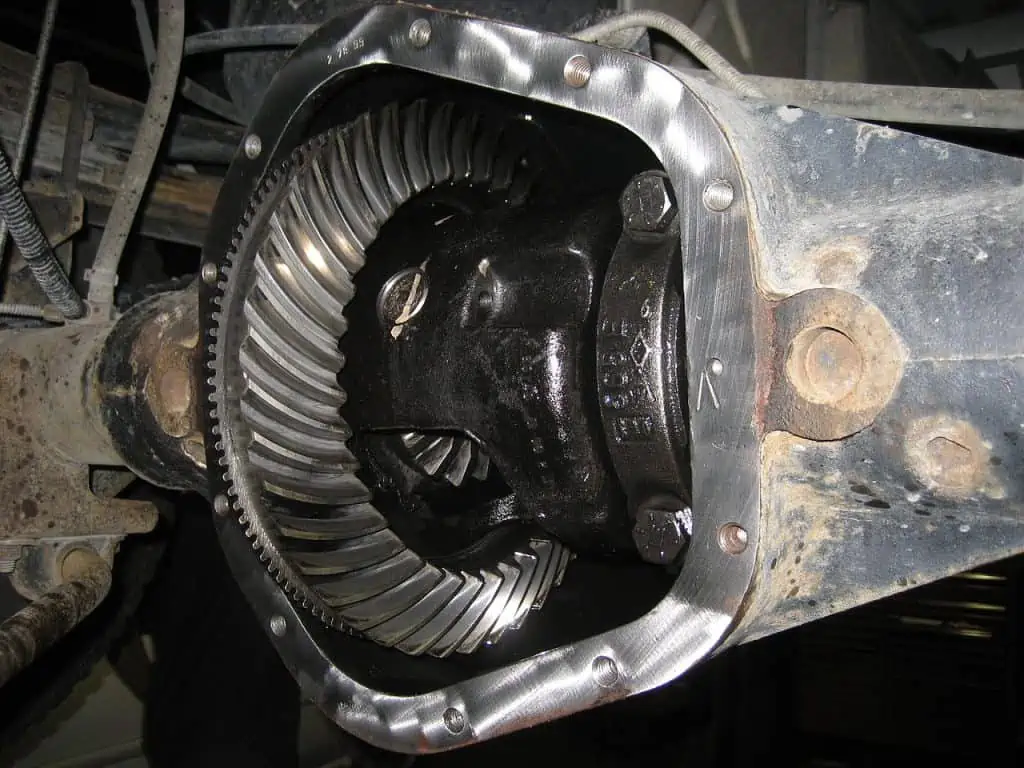
- Lift the car and place jack stands under it for support.
- If the differential assembly has axles, take the axle shafts off of both sides. To access the rear cover bolts if your car doesn’t have an open differential, you’ll need to first remove these shafts.
- The differential assembly should be drained of its differential lubrication.
- Pulling the cover upward or, if necessary, using a proper pry tool to pry it open will allow you to remove the back cover.
- Check the differential case’s gasket surface for any debris, corrosion, or other foreign objects that could prohibit the case and gasket from being sealed against one another. Use a wire brush or scraper to clean these surfaces.
- Check the differential case for any deterioration, including corrosion, worn threads, cracks, and dents. Replace the differential assembly with a new one if the bearing journal surfaces have wear and cannot be restored by machining.
- Replace the differential case’s gasket. Ensure that the gasket is installed properly and that the bolt holes are all lined up.
- Be careful not to disturb the gasket as you attach the rear cover to the differential case. tighten the bolts to the proper torque.
- If the axle shafts were removed, replace them and tighten the axle nut to the recommended torque.
- Lower back your car.
- Put the right fluid in the differential assembly in the right amount. For this information, consult your owner’s manual or a service manual.
If the Differential Pinion Seal, Differential Side Seals, and Axle Seals are the Issue
Axle seals, differential side seals, and differential pinion seals are all crucial elements of your car’s drivetrain. Each one is essential to keeping the differential fluid in the proper place and avoiding leaks.
These seals may deteriorate or become damaged over time, leading to leaks. It is crucial to change these seals if you notice any fluid leaks coming from your car’s differential to keep it safe. You can do this by using the steps listed below:
- Find the differential fill plug first, which is located on the side of the differential housing. Use a socket or wrench to remove the fill plug while the engine is off.
- Next, pour the Differential fluid into a drain pan. To make sure that all the liquid is drained, you might need to use a funnel.
- After draining the differential, pull away the old pinion seal with a screwdriver or another suitable instrument. When removing the old seal, exercise caution to prevent damage to the differential housing.
- Apply differential fluid to the seal lip to lubricate it before pressing the new pinion seal into the differential housing.
- After that, use a seal installer tool to force the new differential side or axle seals into the differential housing. The tool might need to be tapped with a hammer until it is completely seated in the differential housing to do this.
- Fill the differential with new oil after replacing the differential pinion seals, differential side seals, and axle seals.
- Replace the fill plug once again, then start your car to check for leaks coming from the new differential seals. Repeat the process until all leaks are corrected if you find any.
ARB air-locking differential by Richard Harvey / CC BY-SA 3.0. A rear differential leak needs to be fixed as soon as feasible. Depending on how severe the leak is, your automobile may sustain damage or perhaps become undrivable.
How Can Rear Differential Leaks Be Prevented?
A leak is among the differential issues that you can experience the most frequently. Leaks can be brought on by many things, such as rust, damage from debris, or general wear and tear. These leaks can cause major issues for your differential, including decreased performance and damaged components if they are not correctly fixed.
Fortunately, there are easy precautions you may take to lessen the likelihood of a rear differential leak. Here are some suggestions for stopping these leaks and maintaining the functionality of your differential:
1. Regularly Check the Fluid Level
Low or filthy fluid is one of the most frequent reasons for differential seal leakage. Regular fluid checks can help to ensure that they are at the ideal level and can aid in spotting any engine leaks or differential leaks before they worsen.
2. Keep the Surroundings of the Differential Tidy
The wear and tear on the seals brought on by debris and filth might result in leaks. The likelihood of this occurring can be decreased by maintaining cleanliness in the vicinity of your differential.
3. Check the Seals Frequently
Seals are susceptible to wear and deterioration over time. Regular seal inspections will assist in spotting any possible issues before they worsen.
4. Make Regular Arrangements for Maintenance
Leaks and other issues can be avoided by routinely having your differential serviced by a qualified mechanic. This could entail flushing, changing the fluid, or replacing worn-out or broken components.
5. Use High-Quality Parts and Fluids
Utilizing replacement parts and high-quality transmission fluid can assist to increase the lifespan of your differential and lessen the likelihood of leaks developing. Additionally, this will improve overall performance and increase the fuel efficiency of your car.
How Much Does It Cost to Fix Rear Differential Leak Symptoms?
It’s critical to have a rear differential leak rectified as soon as possible. Depending on the leak’s intensity, your car can get damaged or perhaps become undrivable.
Repairing a rear differential leak often costs between $150 and $2,000 in total. This is a sizable bracket, but the cost of repair would depend on which portion or parts have failed. Let’s examine that specifically:
1. If Your Differential Gasket Is Bad
A replacement differential gasket typically costs between $350 and $450. While parts are priced between $183 and $239, labor costs are predicted to range between $167 and $211. This price range implies that the front and rear differential gaskets will need to be replaced at the same time and excludes taxes and fees.
2. If Your Axle Seals, Side Seals, or Rear Differential Pinion Seals are Damaged
A Differential Pinion Seal Replacement typically costs between $184 and $217. Between $109 and $189 is the projected range for labor costs, while $20 to $40 is the estimated range for parts.
The rear differential gear mechanism by 17177 / CC BY-SA 3.0. There could be a number of potential reasons why the rear differential starts to leak. Age, mileage, and road conditions are a few examples of these variables.
Nevertheless, the precise price may vary according to the brand and type of your car. If an axle seal leaks or the rear main seal needs to be replaced, there will be additional costs. As a result, the replacements must be completed right away.
3. If the Differential Cover Is Damaged
Although they are not the most expensive component of your car, differential covers are also not inexpensive. A new differential cover will cost you between $100 and $300, depending on the make and model of your car.
Nevertheless, the price of a repair will vary based on the extent of the damage and whether you also need to replace any other parts.
4. If the Differential Is Bad Across the Board
Depending on the type and model of your car, the cost to replace a differential will change. The majority of diffs must be professionally installed, which means that labor expenses will rise significantly. For the majority of rear-wheel drive vehicles, the budget is between $1,000 and $2,000 because the parts themselves are not cheap.
A Differential Stop Leak: What Is It and How Important Is It?
An excellent strategy to avoid expensive repairs and prolong the life of your vehicle’s differential is to use a differential stop leak. A sort of additive called differential stop leak is used to assist stop minor leaks that develop in the differential part of your car.
Differential stop leaks are available for purchase online and at most auto supply stores. It helps to seal small cracks and stop additional leakage by chemically reacting with the fluid in your differential.
Differential stop leaks come in a variety of pricing ranges and brand names. The majority of them are risk-free and, when done correctly, can extend the life of your vehicle’s differential or even stop any damage from happening.
Is Driving Safe If Differential Fluid Is Leaking from the Rear Pinion Seal?
Since it depends on the extent of the leak and other variables, there is no conclusive answer to this question. However, if there is only a tiny amount of fluid coming from the pinion seal, it is typically okay to drive. You might need to have the differential fluid changed more frequently if the leak is considerable or if your car has not received regular maintenance.
How Long Does It Take Before the Rear Differential Becomes Leaky?
The development of a leak in the rear differential might be caused by many different circumstances. These variables include things like age, mileage, and road conditions.
You might begin to notice leaks from the rear differential seal if your car is older than ten years old or has more than 150,000 miles on it.
Additionally, imagine that the differential is placed in a hot environment, such as a racing or off-road vehicle with little ventilation. The differential seal can then sustain damage and start to leak. Driving conditions might also affect how quickly a rear differential leak develops.
It can be more difficult on the ring gear bearings and cause leaks if you routinely pull huge loads behind your car.
A car reat differntial components by Aconcagua / CC BY-SA 3.0. If your vehicle is more than ten years old or has more than 150,000 miles on it, you may start to detect leaks from the rear differential seal.
DIY Procedure for Rear Differential Fluid Change
This is the chapter you’ve been waiting for if it’s time to replace your differential fluid. We’re going to discover the right way to conduct do-it-yourself rear differential repairs.
It is necessary to refill this fluid every 30,000 to 60,000 miles. However, some vehicle differentials only need to be lubricated after 100,000 miles or more. However, you are unable to put off changing the fluid any longer. So, how would one go about fixing a rear differential?
You will need a lift, a fresh differential gasket, a bucket, a wrench, and fresh differential fluid to service your differential. It can be challenging, but not impossible, to replenish the fluid if you don’t have the lift. Jack stands are an option. But be sure the vehicle is securely fastened and won’t roll.
Step 1
Lifting the vehicle into the air will allow you to check the differential’s condition. It’s a good thing if the gasket leaks because we’re going to replace it.
Step 2
Get a large bucket and set it underneath the differential at this point. Since the differential lacks a drain plug, refilling the fluid will be very dirty, making this imperative. A large bucket will work in this situation.
Step 3
Gather the oil in a large bucket and slowly start to loosen the bolts that are around the oil pan. Make sure that no moisture is left within. This is crucial because you want to drain the differential of all the old fluid.
Step 4
You can now scrape the gasket material from the differential and the area around the pan. Make sure the old gasket is removed and the surface is well-cleaned. This will ensure that the new gasket is well-sealed.
Step 5
It is now time to apply the new gasket in place, making sure that you get it right and that all the holes match, after cleaning the gasket material. The pan can then be added, and the bolts around it can then be tightened.
Step 6
It’s time to fill the differential with fresh fluid after tightening the nuts surrounding the pan. There is a plug on the differential’s side. Get a hose and remove this plug right away. After that, you must insert the hose into the differential and begin to pour fluid.
Pour fluid until it begins to leak out of the differential’s side. You must cease adding more fluid as soon as the first drips begin to fall from the side. Once the filling bolt has been torqued, you are ready to go.
After a successful servicing, your differential is now good to go for tens of thousands of further miles without experiencing any problems. To maintain differential safe, it is best to replace the fluid as soon as possible.
Positive traction differential by RB30DE / CC BY-SA 3.0. The differential seal may become damaged and begin to leak. How quickly a rear differential leak manifests may also depend on driving circumstances.
The Conclusion
A major issue that may require costly repairs is a rear differential leak. To stop leaks from occurring in the first place, there are a few things you may do.
These include performing routine fluid checks, maintaining a clean environment surrounding the differential, performing routine seal inspections, and planning routine maintenance appointments. If a leak does happen, it’s critical to have it rectified as a way to prevent further harm.
It’s always preferable to leave this type of work to an expert because differential faults can be challenging to diagnose and repair. A mechanic will be able to carefully examine your car and do any required maintenance so you can return to driving safely.
They will be aware of exactly what needs to be done to get your car’s drive system back in working order, whether it’s a leak or simply worn-out seals.
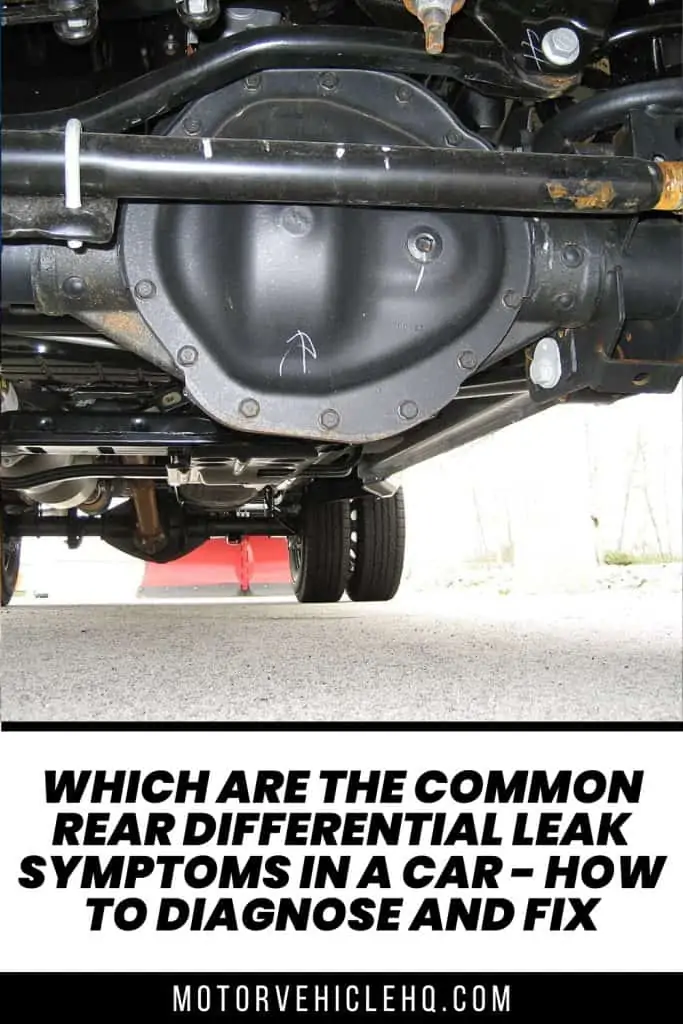
The car’s rear differential by Dana60Cummins / CC BY-SA 3.0

Jim Wicks is the founder of MotorVehicleHQ. With over two decades of experience in the automotive industry and a degree in Automotive Technology, Jim is a certified car expert who has worked in various roles ranging from a mechanic, car dealership manager, to a racing car driver. He has owned more than 20 cars over the past 15 years. Ask him about any vehicle you see on the road and he can tell you the make, model and year. He loves the aesthetics of all things cars, and keeps his vehicles in pristine condition.
In his free time, Jim enjoys getting his hands dirty under the hood of a classic car or taking long drives along the country roads. His favorite car? A 1967 Shelby GT500, a true classic that, according to Jim, “represents the pure essence of American muscle.”
